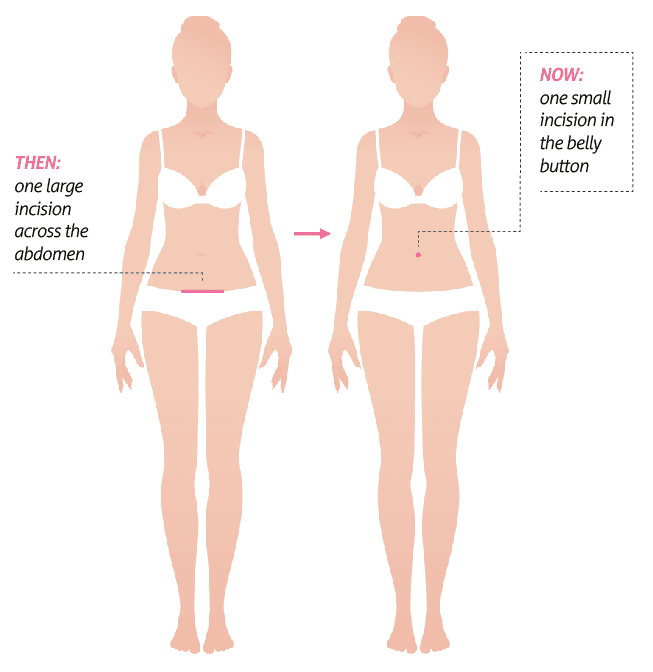
Many benign (non-cancerous) conditions can affect a woman’s reproductive system, which includes the uterus, cervix, ovaries and fallopian tubes. Common conditions include: fibroids, endometriosis, adenomyosis, and pelvic organ prolapse, which is the “falling” of the uterus, vagina, and/or bladder.
Some of the more common symptoms of these conditions may include: pelvic pain, heavy bleeding, irregular periods, fatigue, bloating, pain during sexual activity, and infertility. If your symptoms are severe, your doctor may suggest medicine, lifestyle changes, or surgery. Your doctor may suggest a hysterectomy – removal of your uterus, cervix, fallopian tubes and possibly the ovaries – for any of these conditions.
New Options with Better Results
Surgery, particularly hysterectomy, is a treatment option often associated with fear, anxiety and uncertainty. One of those fears is the disfigurement associated with unwanted scars that can be a permanent reminder of a difficult time in one’s life. Minimally invasive surgery helps to alleviate some of the fears of surgery by offering shorter recovery times, less blood loss, less postoperative pain, quicker return to normal activities and, yes, less disfiguring scars.


Single-Site Hysterectomy
The latest advances in the field of minimally invasive gynecologic surgery are focused on even further reductions in post-operative pain, operative times, recovery time, and scarring. “Single-incision” or “single-site” laparoscopic and robotic surgery is the most advanced, least invasive surgical option currently available. It allows for traditional hysterectomy and other benign (non-cancerous) gynecologic surgical procedures to be performed through an almost invisible 1-inch incision in the belly button.
Although no long-term outcome data is available, it appears that single-site surgery for hysterectomy is an option that allows for even shorter operative times and faster recovery than even multi-site robotic hysterectomy.
Good Candidates
At first, single-site robotic hysterectomy (and other single-site gynecologic procedures) was limited to women with a body mass index less than thirty, a normal-sized uterus and no anticipated adhesions or scar tissue. However, with recent advances in technique and equipment, there are virtually no limitations to candidates for single-site surgery in the hands of an experienced single-site surgeon.



